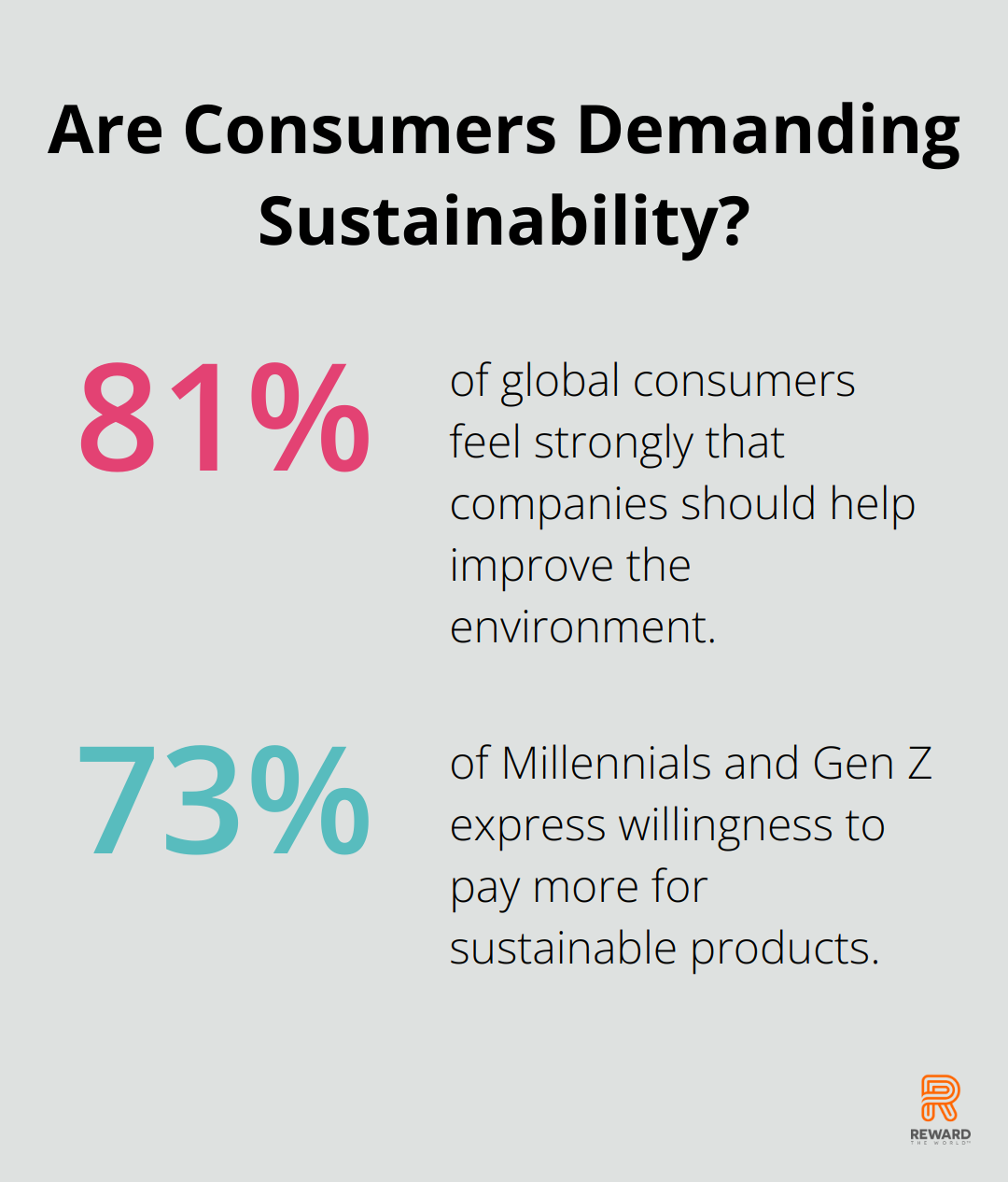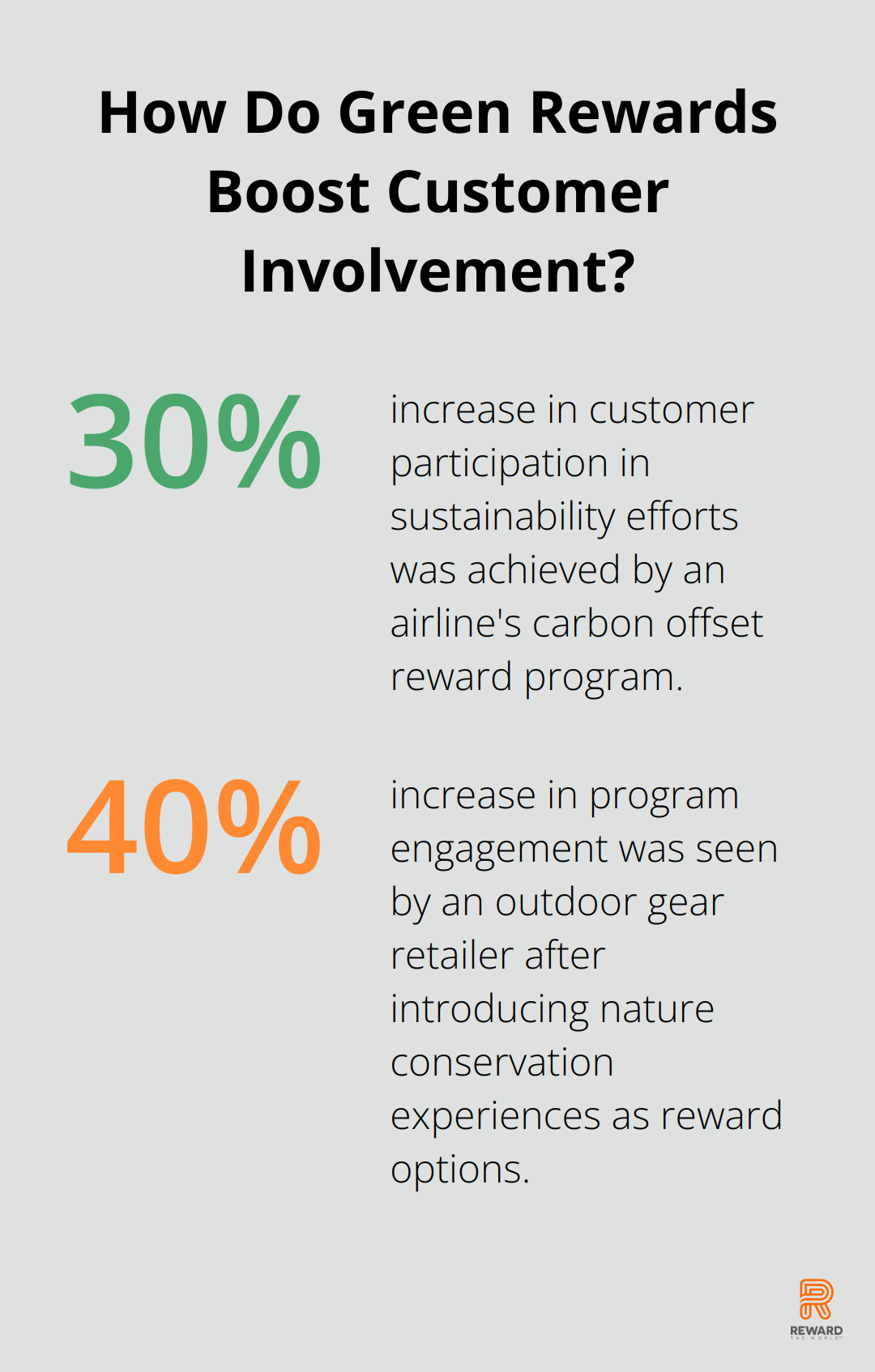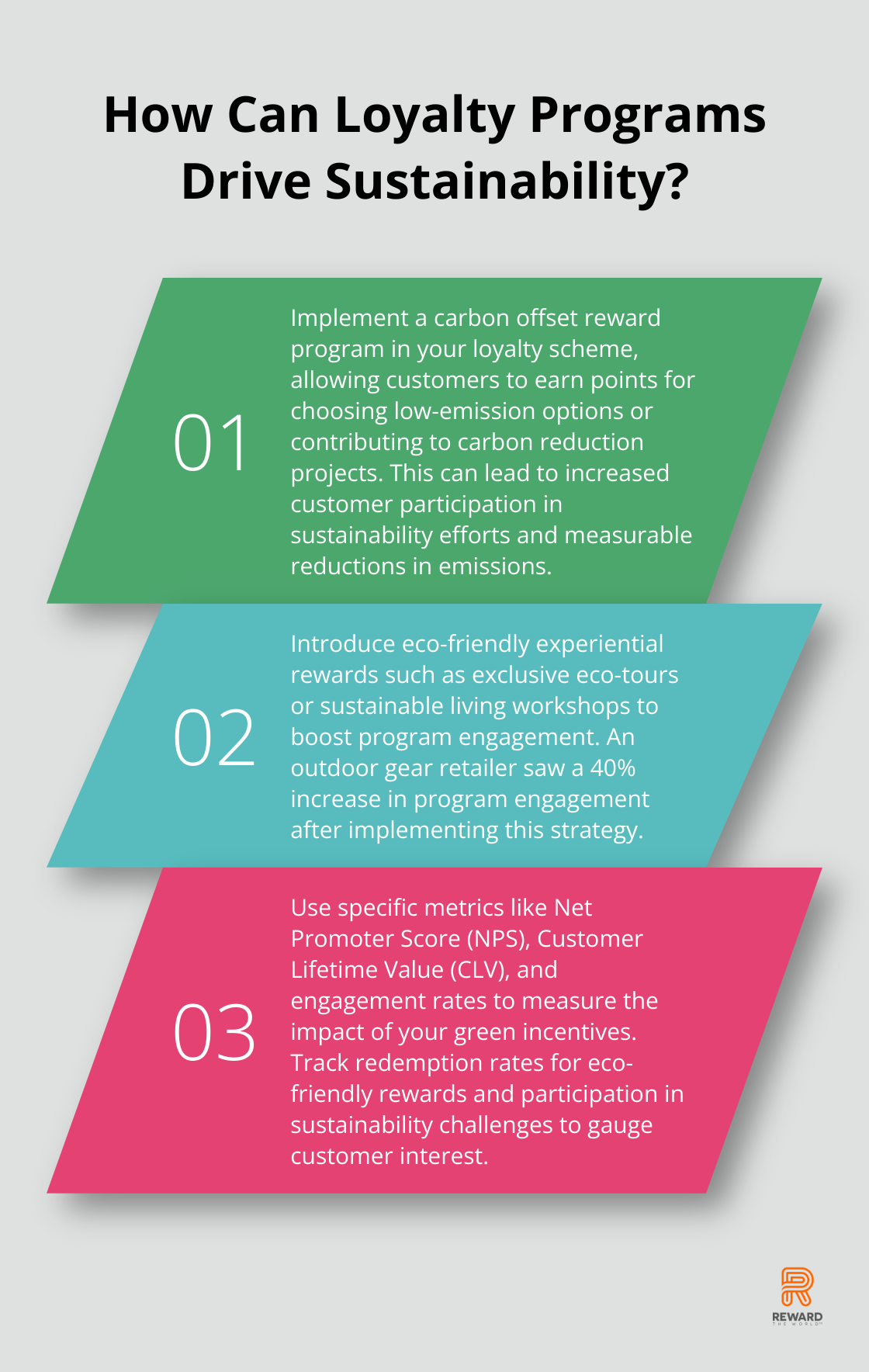
Green incentives are revolutionizing the way brands connect with eco-conscious consumers. As sustainability becomes a top priority for shoppers, companies must adapt their loyalty programs to meet these evolving expectations.
At Reward the World, we’ve seen firsthand how sustainable rewards can significantly boost brand loyalty and customer engagement. This blog post explores effective green incentive strategies and their measurable impact on both business success and environmental conservation.
Why Consumers Are Going Green
Environmental Awareness Skyrockets
Recent studies reveal a surge in environmental consciousness. A Nielsen study shows that 81% of global consumers feel strongly that companies should help improve the environment. This sentiment resonates particularly with younger generations, as 73% of Millennials and Gen Z (two key demographic groups) express willingness to pay more for sustainable products.
Sustainability Shapes Purchasing Decisions
This heightened awareness directly influences buying habits. A recent study found that consumers consider a brand’s environmental policies before making a purchase. This trend extends beyond individual products to encompass the entire brand ethos.
Brands Face New Expectations
Consumers now demand active environmental stewardship from brands. This shift presents both challenges and opportunities for businesses.
Green Initiatives Yield Tangible Benefits
Companies that align with these values reap substantial rewards. This underscores the potential for businesses to grow their customer base through sustainable practices.
Adapting to the Eco-Conscious Marketplace
The message rings clear: sustainability has evolved from a niche concern to a mainstream expectation. Brands that fail to adapt risk irrelevance in this increasingly eco-conscious landscape. Companies must now innovate their reward programs to meet these evolving consumer demands and secure long-term loyalty.

As we explore effective green incentive strategies in the next section, we’ll uncover how businesses can leverage this shift in consumer behavior to create meaningful connections and drive brand loyalty.
How Brands Can Implement Effective Green Incentives
At Reward the World, we’ve observed a significant increase in companies seeking innovative ways to incorporate sustainability into their loyalty programs. Let’s explore some of the most effective green incentive strategies that brands use to boost customer engagement and environmental impact.
Sustainable Product Rewards
One of the most straightforward approaches offers eco-friendly products as rewards. This strategy not only incentivizes loyalty but also introduces customers to sustainable alternatives they might not have considered otherwise. Sustainable Product Rewards can help reduce the negative impact of a company’s operations on the environment.
Carbon Offset Programs
Carbon offset initiatives have gained traction as consumers become more aware of their carbon footprint. These programs allow customers to earn points or rewards for choosing low-emission options or contributing to carbon reduction projects. A leading airline implemented a carbon offset reward program, which resulted in a 30% increase in customer participation in sustainability efforts and a measurable reduction in flight-related emissions.
Eco-Friendly Experiential Rewards
Experiential rewards with an environmental focus prove highly effective in engaging customers. These can range from exclusive eco-tours to workshops on sustainable living. An outdoor gear retailer saw a 40% increase in program engagement after introducing nature conservation experiences as reward options.
Plant-a-Tree Initiatives
Simple yet impactful, plant-a-tree programs resonate strongly with environmentally conscious consumers. These initiatives often allow customers to convert points into tree plantings, creating a tangible, positive impact. Plant-a-tree programs can contribute to customer retention, as customers keep returning and buying from a company.

Implementing these green incentives requires careful planning and execution. Companies must ensure that their chosen strategies align with brand values and resonate with their target audience. Additionally, transparency in reporting the environmental impact of these initiatives is key to building trust and maintaining engagement.
The most successful loyalty programs will seamlessly integrate sustainability into their core offerings. This approach creates a win-win situation: it fosters customer loyalty while contributing to environmental conservation. (As we move forward, it’s essential to consider how to measure the impact of these green initiatives effectively.)
How to Measure Green Incentive Impact
Measuring the impact of green incentives allows businesses to understand the effectiveness of their sustainability programs. This chapter explores practical ways to track and evaluate the success of green loyalty programs.
Key Performance Indicators for Sustainability
To gauge the effectiveness of green incentives, businesses should focus on specific, measurable metrics. The Net Promoter Score (NPS) indicates customer satisfaction and loyalty. The growing consumer demand for sustainability and Corporate Social Responsibility (CSR) is significantly enhancing Net Promoter Scores (NPS) across industries.
Customer Lifetime Value (CLV) is another critical metric. BCG experts explore the role of Customer Lifetime Value (CLV) in marketing and how to strategize for effective and continuously optimized marketing.

Engagement rates provide insight into how well green initiatives resonate with customers. Tracking metrics like redemption rates for eco-friendly rewards or participation in sustainability challenges reveals customer interest.
Environmental Impact Tracking Tools
Accurate measurement of environmental impact is essential for credibility and continuous improvement. Carbon footprint calculators quantify emissions reductions. Many businesses use these to track the impact of customer choices, such as opting for digital receipts or choosing eco-friendly shipping options.
Waste reduction metrics are particularly relevant for retail and consumer goods companies. Tracking the number of single-use plastics avoided or the volume of materials recycled through loyalty programs provides tangible evidence of environmental benefits.
Water conservation tracking is important for industries with high water usage. Some hotel chains have implemented loyalty programs that reward guests for declining daily room cleaning, resulting in significant water savings that can be measured and reported.
Real-World Success Stories
A global coffee chain implemented a reusable cup program within their loyalty scheme, offering extra points for customers who bring their own cups. This initiative led to a significant increase in reusable cup usage and prevented disposable cups from entering landfills annually.
An electronics manufacturer launched a trade-in program as part of their loyalty rewards, encouraging customers to recycle old devices. This not only boosted customer retention but also resulted in the proper recycling of electronic waste in the first year.
A major airline’s carbon offset reward program allowed frequent flyers to donate points towards sustainability projects. Rewards programs may now include options to donate points for environmental conservation efforts. Customers increasingly appreciate this added value.
(These case studies highlight the dual benefit of green incentives: they drive customer loyalty and foster long-term relationships while creating measurable environmental impact.)
Final Thoughts
Green incentives have become a powerful tool for brands to build lasting customer relationships while contributing to environmental conservation. Sustainable rewards programs align with growing consumer values and drive measurable business success. Data clearly shows that eco-conscious consumers remain more loyal to brands that prioritize sustainability.

Companies that want to implement eco-friendly reward programs should align their initiatives with their brand’s core values and mission. Transparency builds trust with customers, so businesses must clearly communicate the impact of their sustainability efforts. Regular evaluation and adjustment of programs based on customer feedback and environmental impact metrics will ensure long-term success.
Reward the World enables businesses to integrate eco-friendly incentives into their loyalty programs, reaching millions of users globally. Our platform offers an extensive reward catalog and analytics tools for companies to create impactful green initiatives. Brands that embrace sustainable rewards will find themselves well-positioned for success in an increasingly eco-conscious marketplace.
